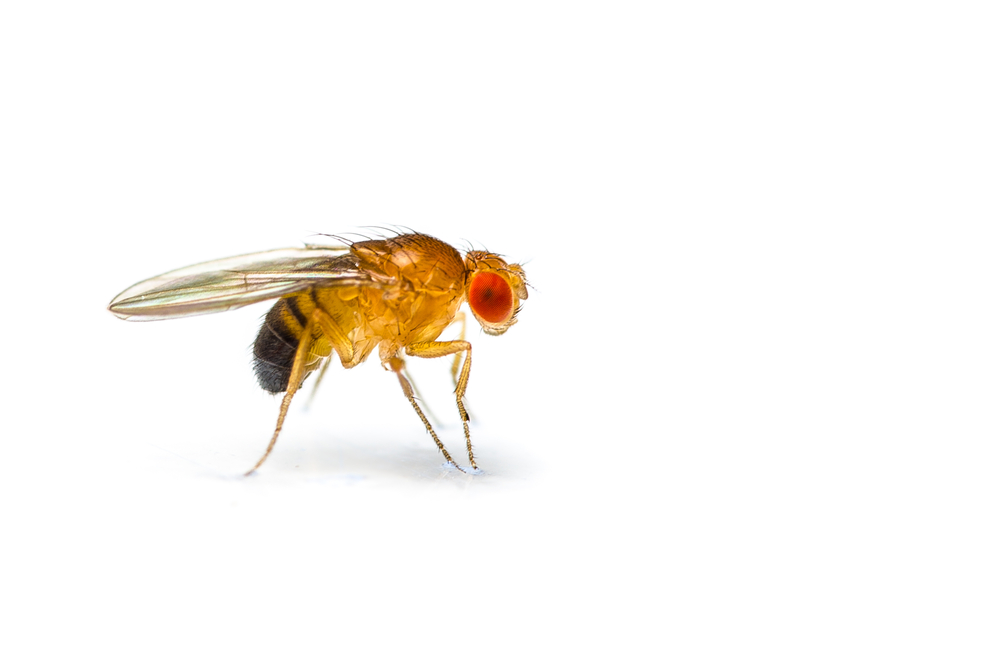Signaling Cascade Discovered in Fruit Flies May Be Promising Target for FXS Therapy

Scientists have discovered a signaling cascade in fruit flies that may be a promising therapeutic target for treating fragile X syndrome in humans.
The study with that finding, “Wnd/DLK Is a Critical Target of FMRP Responsible for Neurodevelopmental and Behavior Defects in the Drosophila Model of Fragile X Syndrome,” was published in Cell Reports.
Fragile X syndrome (FXS), the most frequent single genetic cause of autism spectrum disorder (ASD), is caused by the expansion of CGG repeats in the fragile X mental retardation 1 (FMR1) gene, which provides instructions for making a protein called the fragile X mental retardation protein (FMRP).
One of the most important roles of FMRP is to control the production of certain proteins based on their RNA templates, a process known as translation. Scientists believe that one of the reasons FXS patients develop severe neuronal impairments is because, in the absence of FMRP, certain proteins that normally should be found in very small amounts are produced excessively.
“Unfortunately, efforts to treat FXS by inhibiting or downregulating [reducing the levels] these target proteins have not succeeded. Defining the molecular factors underlying the neurobiological defects in FXS is critical to identify candidate therapies,” the researchers wrote.
Investigators from the Washington University School of Medicine in St. Louis, Missouri, used a fruit fly (Drosophila) model of FXS to look for new FMRP targets that could be useful therapy candidates to treat FXS.
Using flies carrying a mutated copy of the dFmr1 gene (the flies’ equivalent to the human FMR1 gene), mimicking human fragile X, they found that the mitogen-activated protein kinase kinase kinase (MAP3K) Wallenda (Wnd)/dual leucine zipper kinase (DLK) was one of the critical targets of FMRP.
Of note, in flies, the Wnd/DLK is a signaling cascade involved in the activation of kinases (enzymes that add phosphate groups to other molecules) that trigger a stress response, which, if continuously activated, may led to neuronal dysfunction and neurodegeneration.
More specifically, they discovered that in normal conditions, dFMRP (the flies’ equivalent to the human FMRP protein) interacts with Wnd messenger RNA to restrict the production of the Wnd protein. mRNA is the molecule that serves as the template for the production of a functional protein.
However, in flies carrying the dFmr1 mutated gene, Wnd is produced excessively, which results in the overactivation of the Wnd/DLK signaling cascade. As a result, mutant flies start to show structural abnormalities in their neurons and synapses — the junctions between two nerve cells that allow them to communicate — as well as excessive grooming behaviors.
Of note, grooming behavior is a complex, multi-step locomotor program that requires coordinated movement of both forelegs and hindlegs, and excessive grooming behavior is considered a behavioral defect in fly models of fragile X.
Researchers discovered that when they inhibited the activity of Wnd using a DLK inhibitor in larvae carrying the mutated dFmr1 gene, they were able to prevent these flies from developing structural abnormalities in their nervous system.
They also found that when they fed adult flies carrying the mutated dFmr1 gene with food containing the DLK inhibitor, they successfully prevented animals from having excessive grooming behaviors.
“Thus, Wnd signaling can be pharmacologically targeted to restore normal behavior to dFmr1 mutants, even after the bulk of neuronal development is complete, highlighting the possibility of targeting the Wnd/DLK signaling cascade for therapeutic intervention in FXS,” the researchers explained.
“Testing whether the FMRP-dependent regulation of DLK is conserved and functionally relevant in the mouse model of FXS is imperative, and positive results in such experiments may motivate additional translational studies,” they said.






